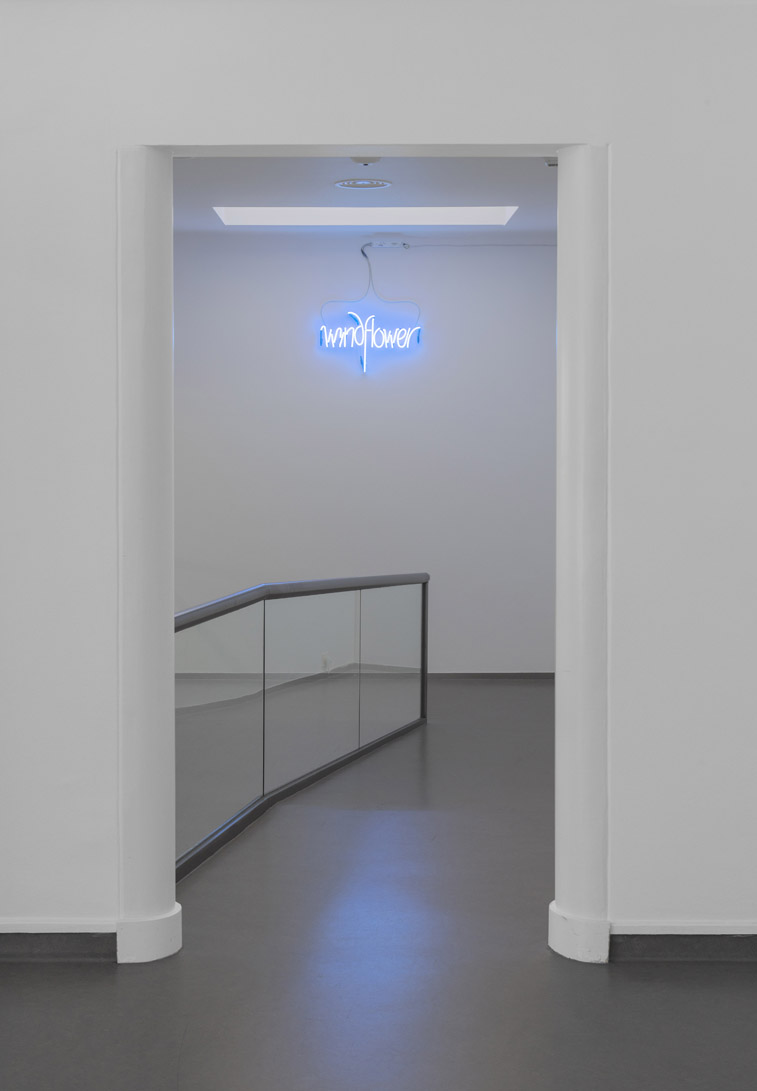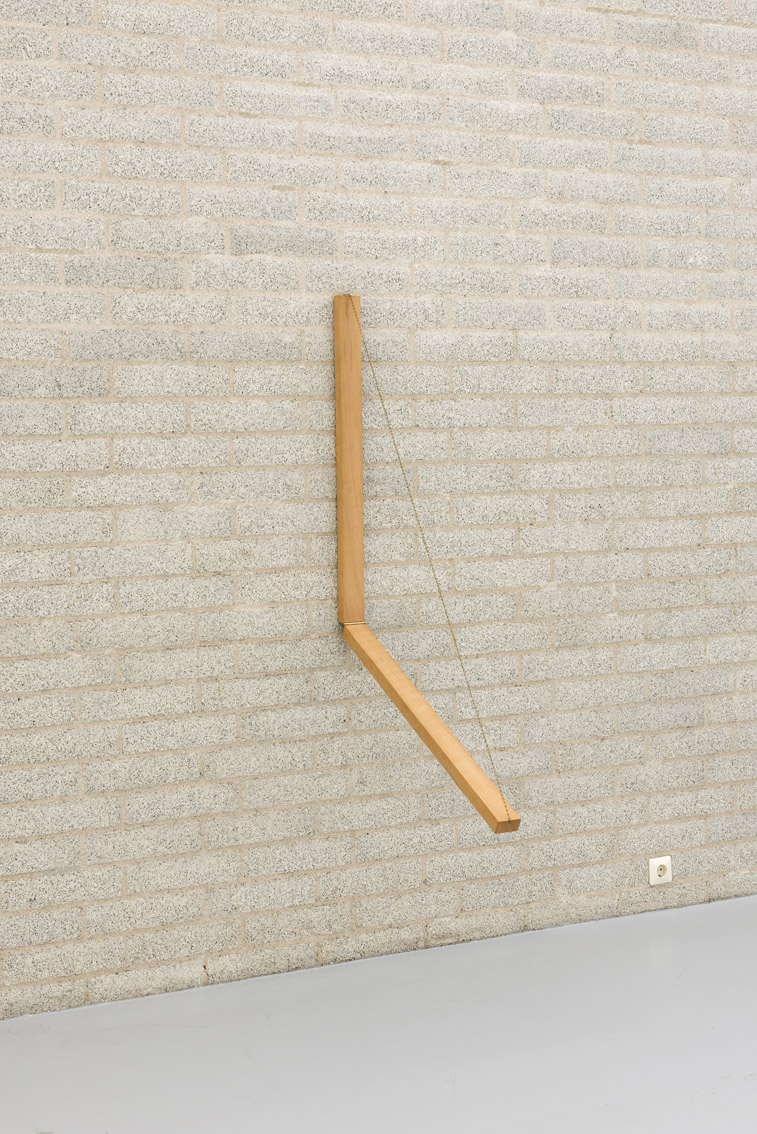The six artworks
Walter De Maria's Calendar changes every day, almost imperceptibly. Each day a link in the chain between the laths shifts. It is a minimal difference from day to day, but in a week or a month, the angle of this calendar has noticeably changed. With two simple wooden laths, De Maria visualises the abstract concept of time.
With his All Shadows that I Noticed in the Kröller-Müller Museum, Jan Dibbets also captures the passage of time. The tape lines document the movement of the sun and the changing shadows during a specific day, a process that usually remains elusive.
Ian Wilson’s Time Spoken also invites reflection on the phenomenon of time. The work exists only in the brief moment when someone utters the word ‘time’ out loud.
This temporary evocation of an idea through language also underlies Lawrence Weiner’s A TURBULENCE INDUCED WITHIN A BODY OF WATER and Ian Hamilton Finlay’s Windflower. Both works are textually present in the room, but exist primarily in the mind of the observer, as the words read unfold in the imagination.
Finally, in an extremely simple way – a card stating the dimensions of the museum room – Stanley brouwn makes us aware of the space that surrounds us often unnoticed.

Conceptual art
The Kröller-Müller Museum has a fine collection of conceptual art, an art movement that emerged in the late 1960s. A conceptual work of art revolves around an idea. This idea constitutes the work; its material execution is of secondary importance or completely irrelevant. Therefore, it is often no longer an object kept in the depot of a museum, like a painting or sculpture. It is a description that evokes something in the mind and thus requires the active participation of the observer for the realisation of the work of art.

